Sun
ID: 11207
In the evening of Feb. 5, 2013, the sun erupted with two coronal mass ejections or CMEs that may glance near-Earth space. Experimental NASA research models, based on observations from the Solar Terrestrial Relations Observatory (STEREO) and ESA/NASA's Solar and Heliospheric Observatory, show that the first CME began at 7 p.m. EST and left the sun at speeds of around 750 miles per second. The second CME began at 10:36 p.m. EST and left the sun at speeds of around 350 miles per second. Historically, CMEs of this speed and direction have been benign.

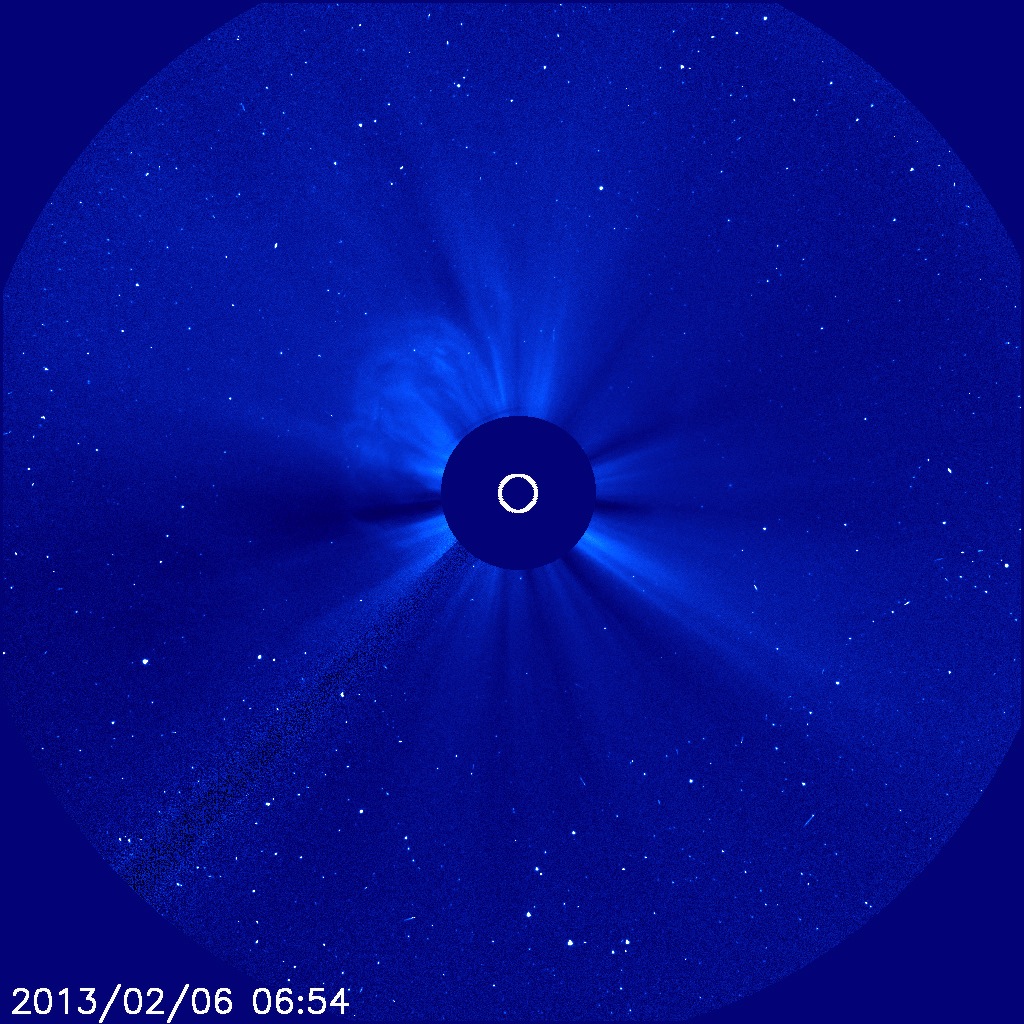
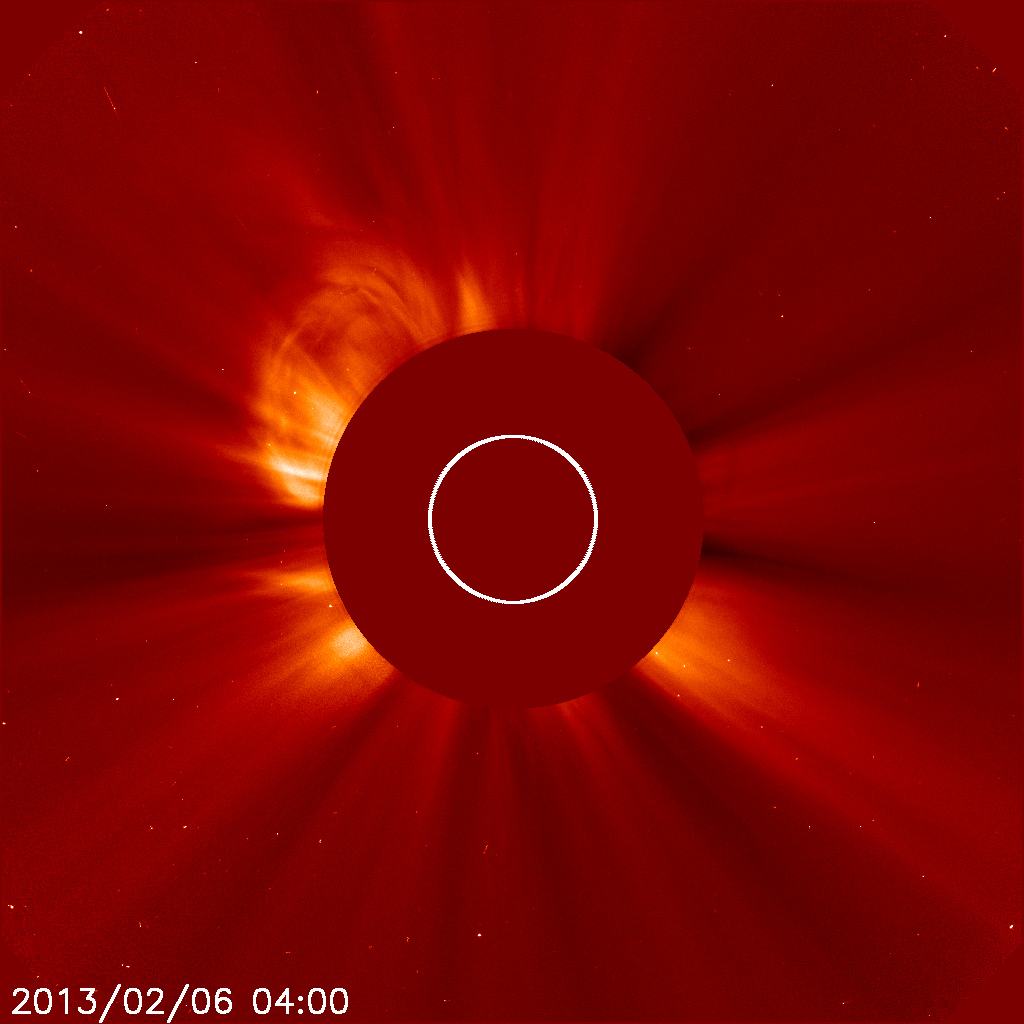
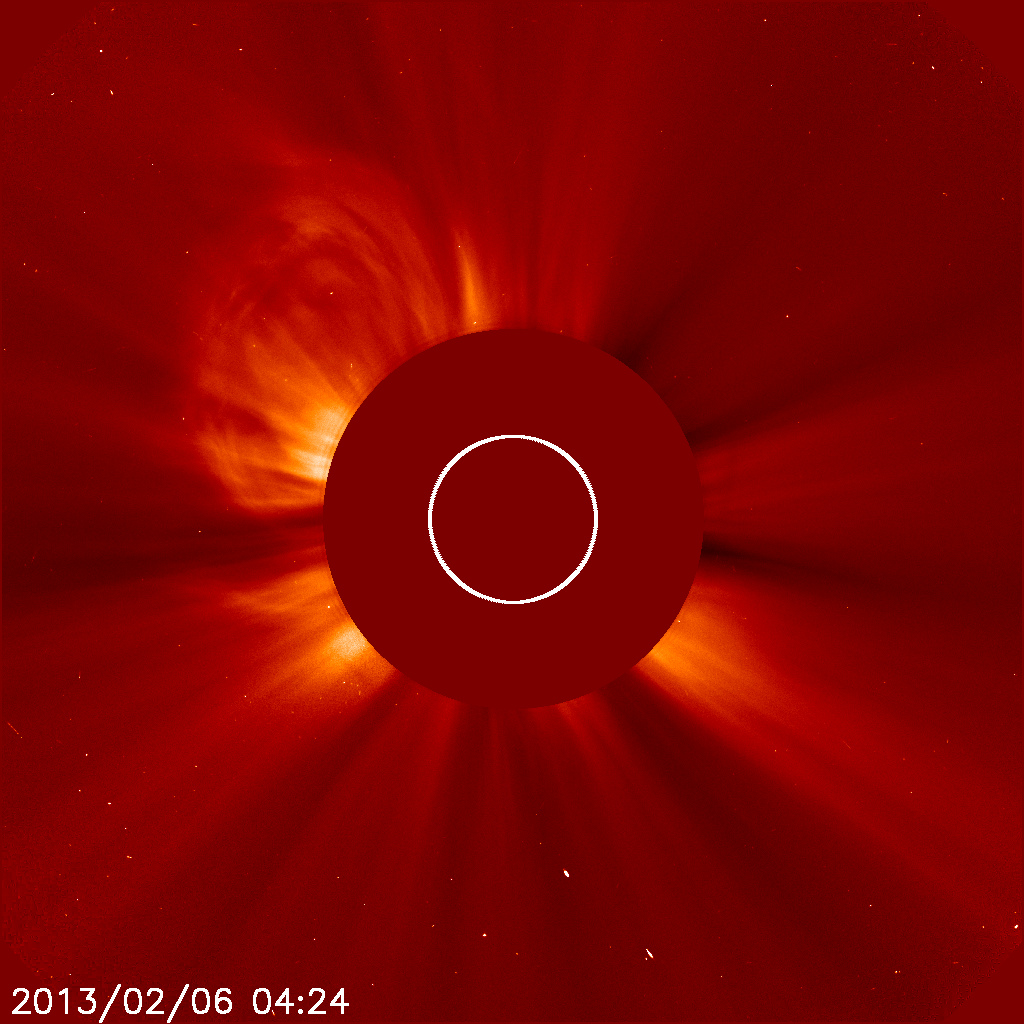
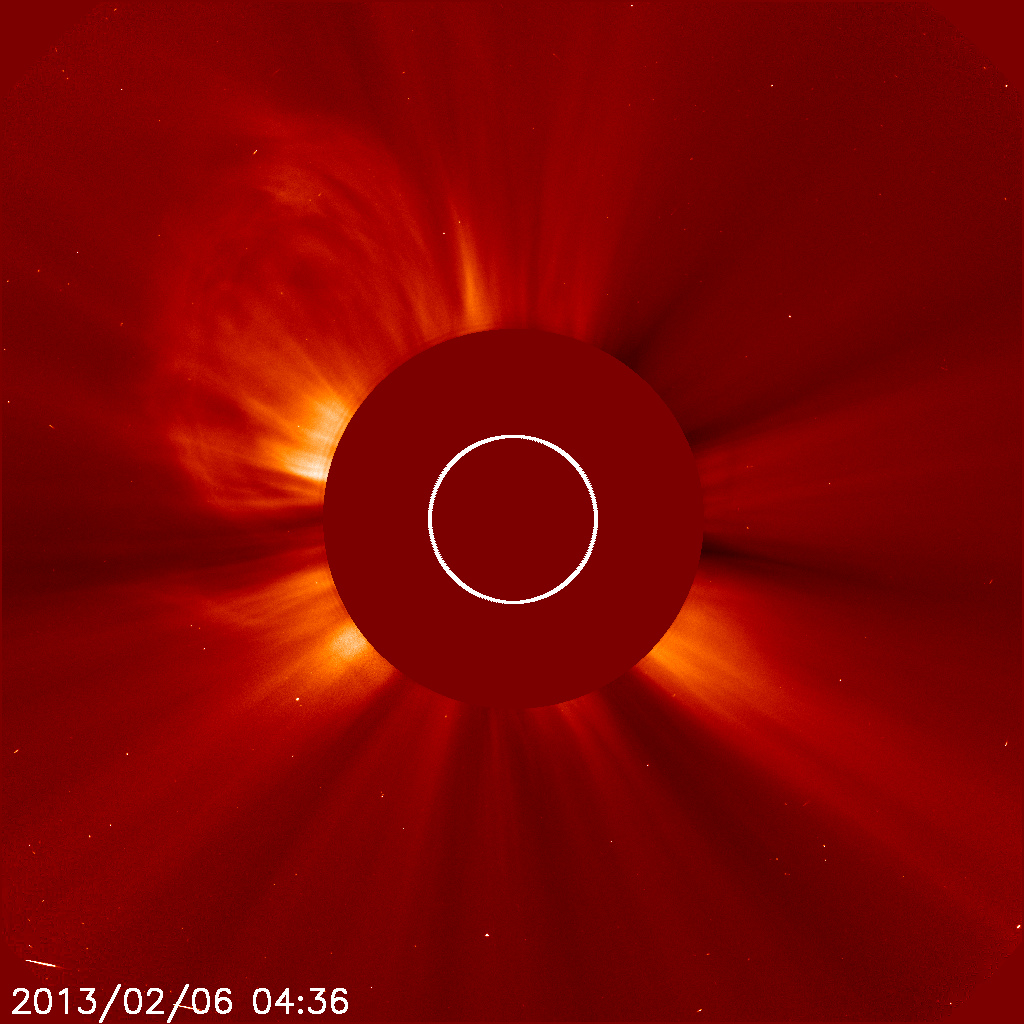
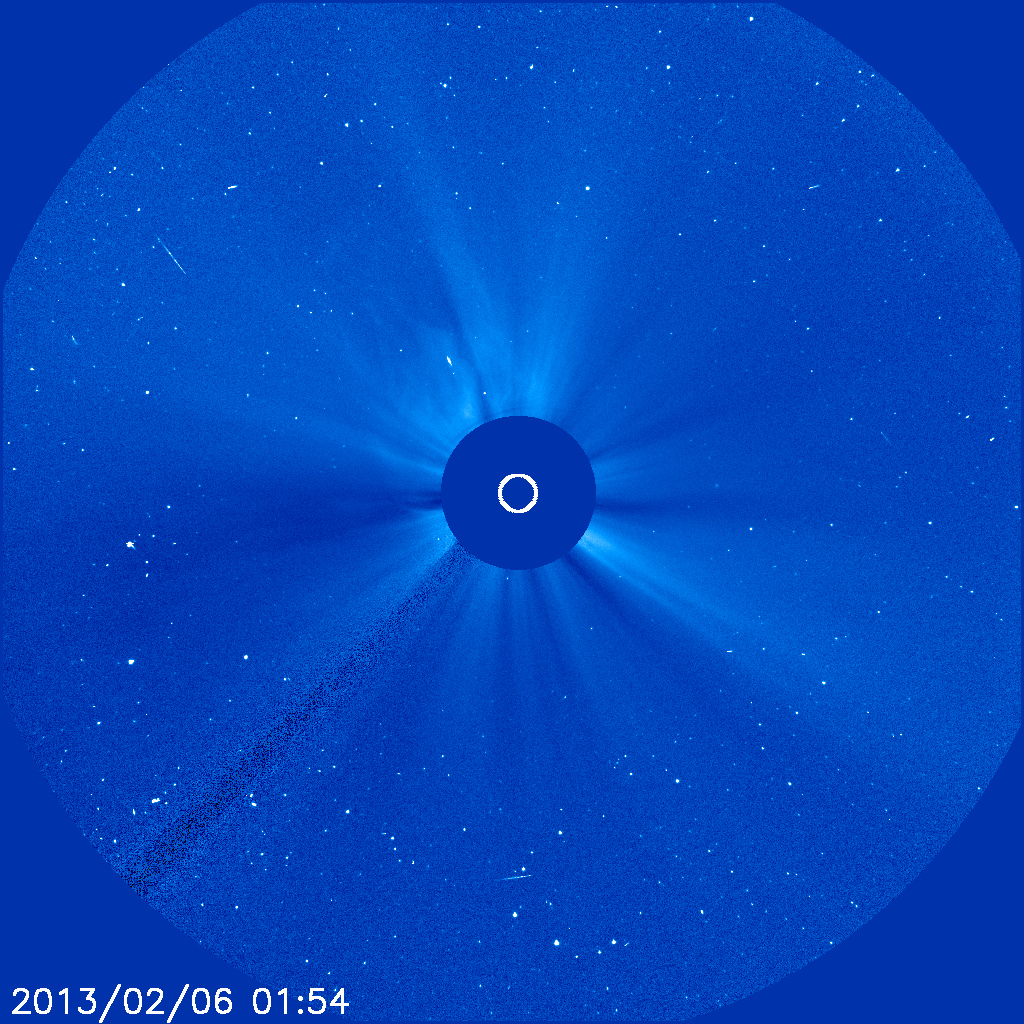
The Sun Produces Two CMEs
Not to be confused with a solar flare, a CME is a solar phenomenon that can send solar particles into space and reach Earth one to three days later.
Earth-directed CMEs can cause a space weather phenomenon called a geomagnetic storm, which occurs when they connect with the outside of the Earth's magnetic envelope, the magnetosphere, for an extended period of time. In the past, CMEs at this strength have had little effect. They may cause auroras near the poles but are unlikely to disrupt electrical systems on Earth or interfere with GPS or satellite-based communications systems.






Credits
Tom Bridgman (Global Science and Technology, Inc.): Lead Animator
Scott Wiessinger (USRA): Animator
Scott Wiessinger (USRA): Producer
Karen Fox (ADNET Systems, Inc.): Writer
Scott Wiessinger (USRA): Animator
Scott Wiessinger (USRA): Producer
Karen Fox (ADNET Systems, Inc.): Writer
Please give credit for this item to:
NASA's Goddard Space Flight Center
NASA's Goddard Space Flight Center
Short URL to share this page:
https://svs.gsfc.nasa.gov/11207
Missions:
SDO
SOHO
Data Used:
Note: While we identify the data sets used in these visualizations, we do not store any further details nor the data sets themselves on our site.
This item is part of this series:
Heliophysics Breaking News
Goddard TV Tape:
G2013-021 -- 2013 Heliophysics Breaking News
Keywords:
SVS >> HDTV
SVS >> SOHO
GCMD >> Earth Science >> Sun-earth Interactions
GCMD >> Earth Science >> Sun-earth Interactions >> Solar Activity >> Solar Flares
GCMD >> Earth Science >> Sun-earth Interactions >> Solar Activity >> Solar Ultraviolet
SVS >> Space Weather
SVS >> Coronagraph
SVS >> SDO
SVS >> Solar Dynamics Observatory
SVS >> Heliophysics
SVS >> Corona
NASA Science >> Sun
GCMD >> Earth Science >> Sun-earth Interactions >> Solar Activity >> Coronal Mass Ejections
SVS >> Extreme Ultraviolet Imaging
SVS >> EUV Imaging
GCMD keywords can be found on the Internet with the following citation: Olsen, L.M., G. Major, K. Shein, J. Scialdone, S. Ritz, T. Stevens, M. Morahan, A. Aleman, R. Vogel, S. Leicester, H. Weir, M. Meaux, S. Grebas, C.Solomon, M. Holland, T. Northcutt, R. A. Restrepo, R. Bilodeau, 2013. NASA/Global Change Master Directory (GCMD) Earth Science Keywords. Version 8.0.0.0.0
https://svs.gsfc.nasa.gov/11207
Missions:
SDO
SOHO
Data Used:
SOHO
NASA and ESA
SOHO monitors the Sun with a variety of instruments.
Among the SOHO instruments is the Michelson Doppler Interferometer (MDI) and the Extreme ultraviolet Imaging Telescope (EIT).
SOHO/Large Angle Spectrometric COronagraph (LASCO)
NASA and ESASDO/AIA/304 Filter also referred to as: AIA 304
JOINT SCIENCE OPERATIONS CENTERSDO/AIA/171 Filter also referred to as: AIA 171
JOINT SCIENCE OPERATIONS CENTERThis item is part of this series:
Heliophysics Breaking News
Goddard TV Tape:
G2013-021 -- 2013 Heliophysics Breaking News
Keywords:
SVS >> HDTV
SVS >> SOHO
GCMD >> Earth Science >> Sun-earth Interactions
GCMD >> Earth Science >> Sun-earth Interactions >> Solar Activity >> Solar Flares
GCMD >> Earth Science >> Sun-earth Interactions >> Solar Activity >> Solar Ultraviolet
SVS >> Space Weather
SVS >> Coronagraph
SVS >> SDO
SVS >> Solar Dynamics Observatory
SVS >> Heliophysics
SVS >> Corona
NASA Science >> Sun
GCMD >> Earth Science >> Sun-earth Interactions >> Solar Activity >> Coronal Mass Ejections
SVS >> Extreme Ultraviolet Imaging
SVS >> EUV Imaging
GCMD keywords can be found on the Internet with the following citation: Olsen, L.M., G. Major, K. Shein, J. Scialdone, S. Ritz, T. Stevens, M. Morahan, A. Aleman, R. Vogel, S. Leicester, H. Weir, M. Meaux, S. Grebas, C.Solomon, M. Holland, T. Northcutt, R. A. Restrepo, R. Bilodeau, 2013. NASA/Global Change Master Directory (GCMD) Earth Science Keywords. Version 8.0.0.0.0











